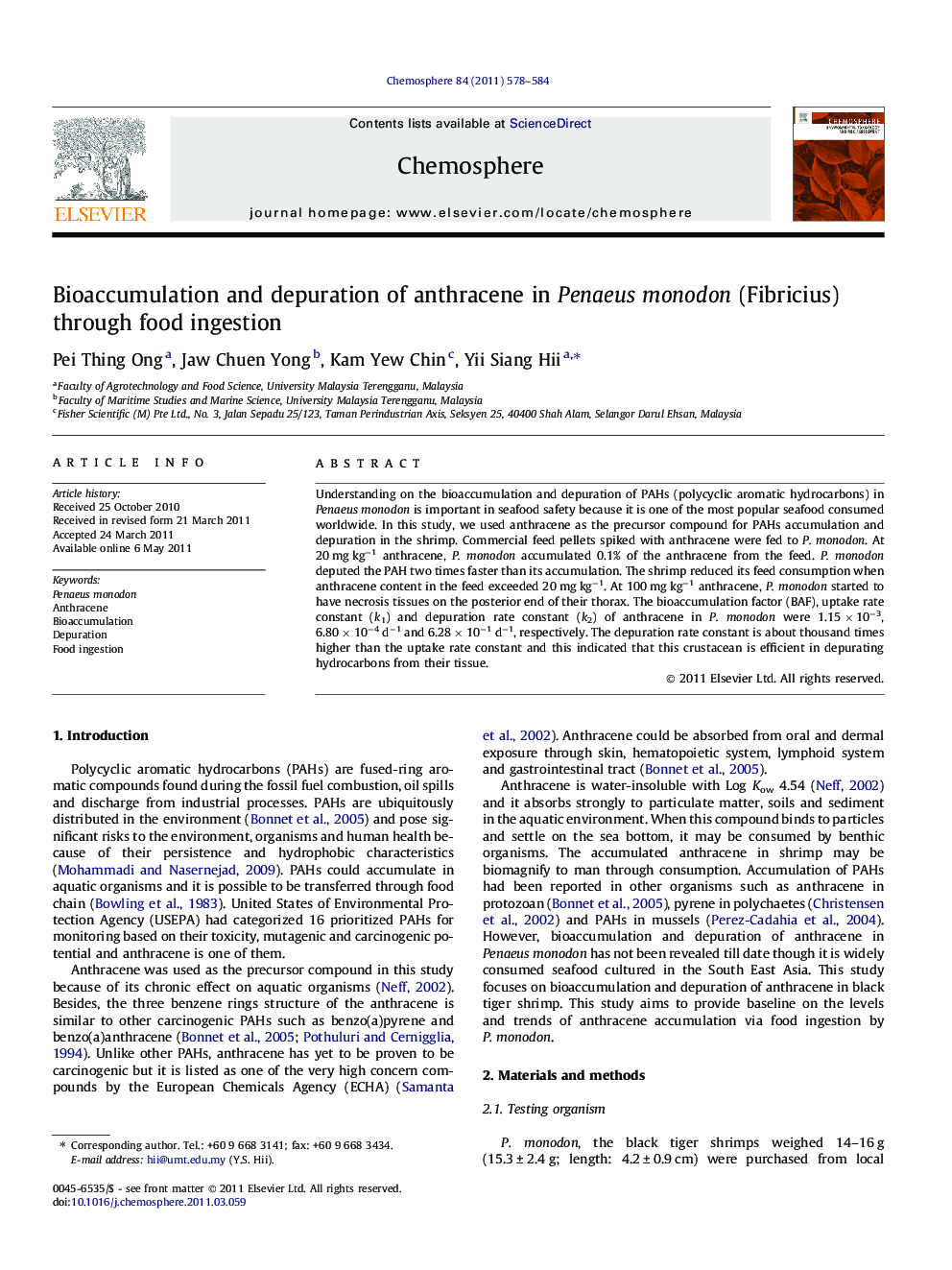| Article ID | Journal | Published Year | Pages | File Type |
|---|---|---|---|---|
| 4410609 | Chemosphere | 2011 | 7 Pages |
Understanding on the bioaccumulation and depuration of PAHs (polycyclic aromatic hydrocarbons) in Penaeus monodon is important in seafood safety because it is one of the most popular seafood consumed worldwide. In this study, we used anthracene as the precursor compound for PAHs accumulation and depuration in the shrimp. Commercial feed pellets spiked with anthracene were fed to P. monodon. At 20 mg kg−1 anthracene, P. monodon accumulated 0.1% of the anthracene from the feed. P. monodon deputed the PAH two times faster than its accumulation. The shrimp reduced its feed consumption when anthracene content in the feed exceeded 20 mg kg−1. At 100 mg kg−1 anthracene, P. monodon started to have necrosis tissues on the posterior end of their thorax. The bioaccumulation factor (BAF), uptake rate constant (k1) and depuration rate constant (k2) of anthracene in P. monodon were 1.15 × 10−3, 6.80 × 10−4 d−1 and 6.28 × 10−1 d−1, respectively. The depuration rate constant is about thousand times higher than the uptake rate constant and this indicated that this crustacean is efficient in depurating hydrocarbons from their tissue.
► The accumulation rate is linear correlated at ⩽20 mg kg−1 anthracene introduced. ► The depuration rate is two times faster than the accumulation rate. ► Necrosis was found after day-5 of exposure to 100 mg kg−1 anthracene. ► Anthracene content was found highest in head in line with the lipid content. ► The shifting trend of accumulated anthracene from head to shell was observed.
